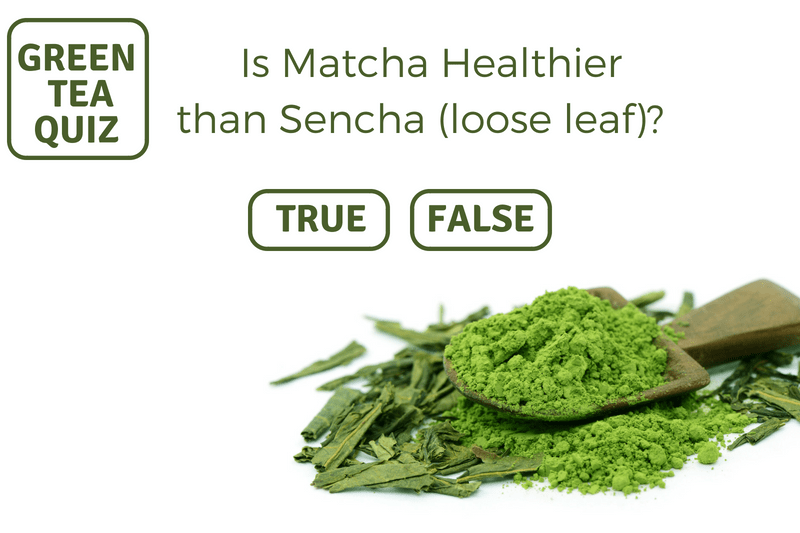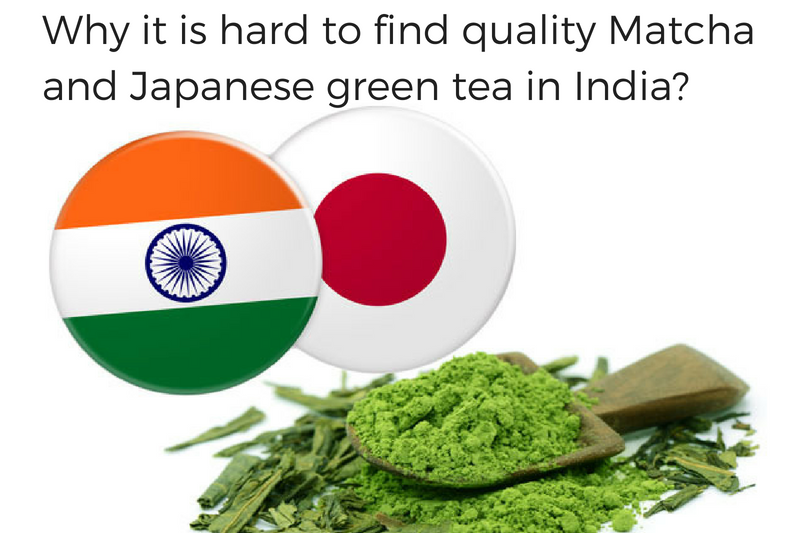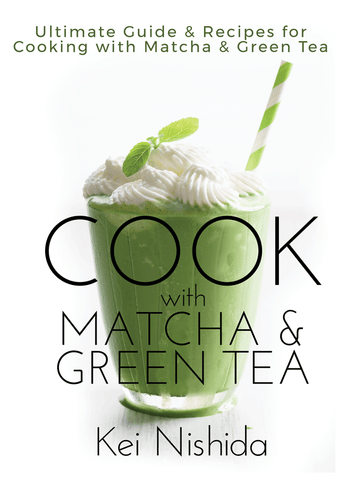The Secret of Tea Grown In Sugarcane Soil
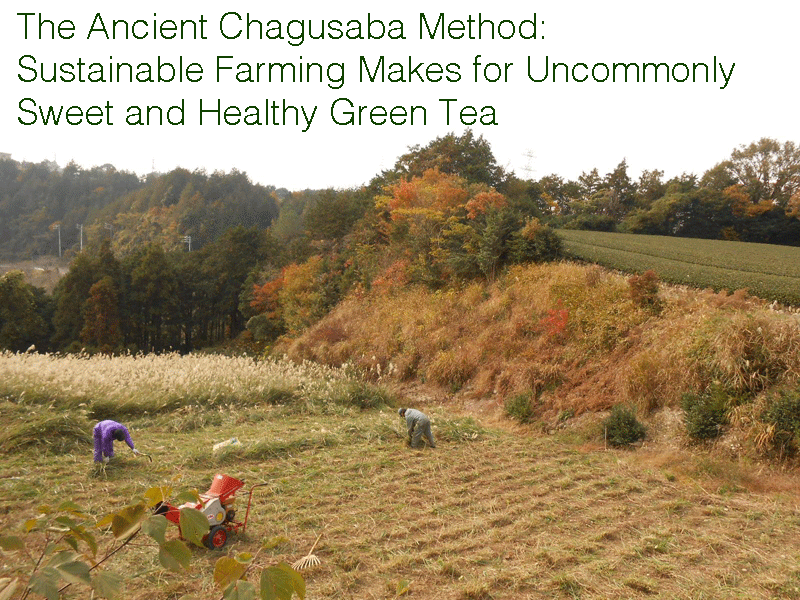
Of all the many varieties of tea, green tea has been enjoyed by people for millennia and is renowned for the differences in its taste, bouquet and appearance. Like fine wine, the differences in green tea are largely determined by the type of leaf, the soil, the climate in which the shrub is grown and how the leaves are processed.
Many connoisseurs of tea consider Japanese green tea cultivated by the Chagusaba (茶草場) method to have an exceptionally sweet taste.
How Farmers Use the Chagusaba Method
Chagusaba is a traditional technique of cultivating the shrub camellia sinensis, the shrub that traditionally produces tea leaves. People have been farming tea using this technique for very long time. Chagusaba (茶草場) is the Japanese word that refers to a partly natural and partly man-made grassland. These grasslands are deliberately grown around the tea field and supply mulch for the shrubs. The grass is cut down in the fall, hung to dry then cut and spread over the furrows in the tea field. The nutrients that are placed in the soil by this mulch greatly affect the taste and the bouquet of the green tea by keeping the soil warm and locking in moisture. The mulch discourages the growth of weeds and keeps soil and fertilizer, if it's being used, from being washed away. At the same time, the mulch keeps the fertilizer from burning the roots of the tea plant. The grass itself is abundant in silicic acid, which further enriches the soil as the grass breaks down. The addition of rice bran and chaff also adds amino acids to the soil. Amino acids are large molecules responsible for building proteins.

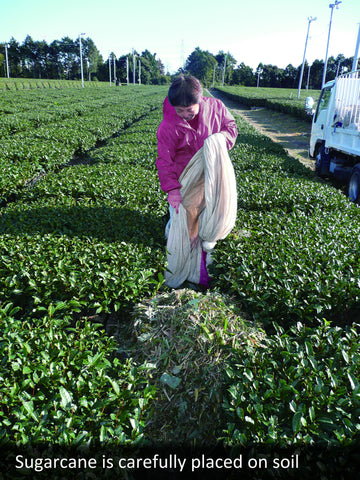
Sustainability and the Chagusaba Method
Best of all, the Chagusaba method is sustainable, as the grasslands are mowed and burned periodically and provide food for cattle and other animals. Managing the grasslands also discourages larger plants from growing and encourages the growth of meadow plants, including species such as Japanese silver grass used for the mulch and the seven herbs of autumn. These are seri, nazuna, hahakogusa, hakobe, koonitabirako, kabu and daikon. Flowers from the grassland called chabana are used to decorate a room during the traditional Japanese tea ceremony. Other elements such as chaff, rice bran, rapeseed meal and VS bacteria are also mixed in the dirt.


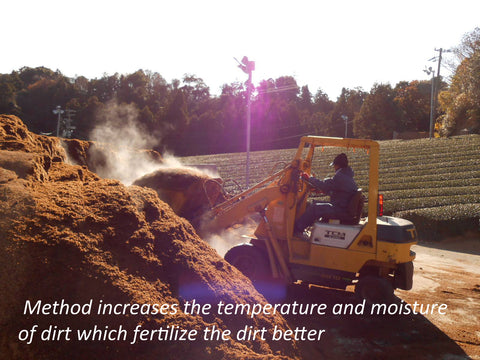
Method Used Mostly in Shizuoka Prefecture
These Chagusaba grasslands are found mostly in Japan's Shizuoka Prefecture near Mount Fuji and the Pacific Ocean. This prefecture is known as the Capital of Tea because of the abundance of the tea produced there. About 43 percent of all the tea in Japan comes from this area. It even has a Tea Museum. Seventy-eight percent of the farmers in this prefecture are tea farmers, and many co-own tea factories and form cooperatives to help process their tea. Though the Chagusaba method requires a lot of hard work, the tea is of such high quality and brings in such high prices that the cooperatives are profitable.
Chagusaba Method is Deemed a Globally Important Agricultural Heritage System
In 2013, the Chagusaba method practiced in Shizuoka was designated a Globally Important Agricultural Heritage System by the United Nations Food and Agriculture Organization. Unfortunately, the Chagusaba technique is falling out of favor with Japanese tea farmers, even though it is sustainable. It is simply less labor intensive to use highly mechanized procedures to process tea. Yet, organizations such as the UNFAO hope that more and more farmers around the world think of adopting the Chagusaba method for cultivating tea.


Producing the Wonderfully Sweet Green Tea
The climate of Shizuoka Prefecture is perfect for the production of green tea. The temperatures are mild, and the area gets plenty of rain. The camellia plant produces its leaves four times a year from early spring to late fall then goes dormant. There are seven tea growing regions in Shizuoka, and the tea of each region is subtly different.
Though there are now machines that pick the leaves of the tea plant, high quality tea is still picked by hand. Only the top two leaves of the plant are plucked. In some farms, this takes 25 to 30 workers every year, and they pluck only about a quarter of an acre every day.
After the leaves are plucked, they are withered. This reduces the amount of water in the tea to make it more supple. When the leaves are withered, they undergo shaqing. They are then put through one of four processes. The leaves can be steamed, which gives green tea its classic "grassy" taste and its grassy color. They can be baked or dried in the sun. Finally, they are dried in ovens after the PPO enzyme has been completely eliminated. During this process the leaves are warmed and left to cool until the water content is under 5 percent.
Can the Chagusaba Method Last?
Green tea is sought after for its sweet taste with grassy notes and its health benefits. The ancient Chagusaba method of using grass and other meadow plants from a semi-natural grassland to mulch tea plants is both environmentally friendly and helps create a unique green tea. Though the method is being replaced by mechanization in many places, environmentalists hope that more farmers embrace it around the world.
Can the Method be Used Outside of Japan?
Farmers outside of Japan who embrace the chagusaba method must adapt it to the soil and climate of the farms where they work, of course. For example, the method is being considered around the Chesapeake Bay area, which is found off the coasts of Maryland and Virginia in the United States. The bay, known for the abundance of its fishing, especially the blue crab that's a favorite in Maryland restaurants, has been deteriorating due to nitrogen run-off. This run-off is the result of adding fertilizer to farms hundreds of miles upstream of the bay itself. Some environmentalists believe that if these farmers used their own version of the Chagusaba method it would support the health and productivity of both the farms and the bay.
Buy Japanese Green Tea Using Chagusaba Method Now
Related Articles You May Be Interested In
Get Free Download
If you have ever thought that Green Tea is an “acquired taste” or that it is “too bitter” to enjoy, we’re here to change your mind! We want everyone to experience the health benefits of Green Tea and show you that this can be an amazing, refreshing, and delicious drink when made correctly. With just a few tips on how to brew this powerful leaf, we can change your mind about the taste and enjoyment of drinking Green Tea.
Don’t miss out on the health benefits of tea!
- Improve health
- Increase brain function
- Regulate weight
- Lower your risk of cancers
- Reduce risk of heart disease
- Lowers risk of diabetes
We know that you will love this tips to brewing tea and getting the most flavor and elegance out of every cup. Sign up for our newsletter and get this great informative manual on brewing green tea. You will learn what it is that makes it one of the most popular beverages in the world.
The E-Book also includes the chapter of Kei Nishida's book, "Art of Brewing Japanese Green Tea" where he teaches you how to brew hot and cold Japanese Green Tea.
Also in Japanese Green Tea Lovers in India
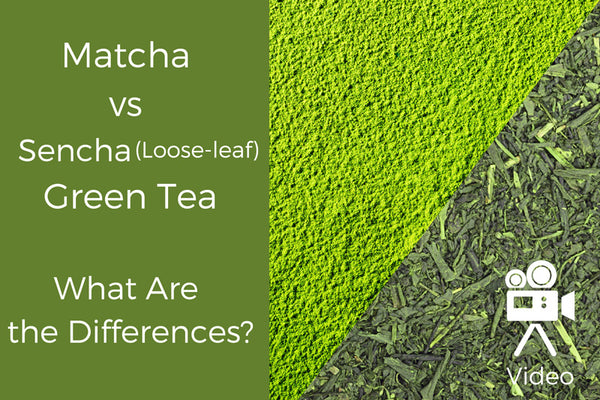
TYPES OF TEA: MATCHA VS SENCHA GREEN TEA: WHAT ARE THE DIFFERENCES?
When it comes to different types of tea, matcha and sencha green tea are two many people have questions about! Get answers in this post.
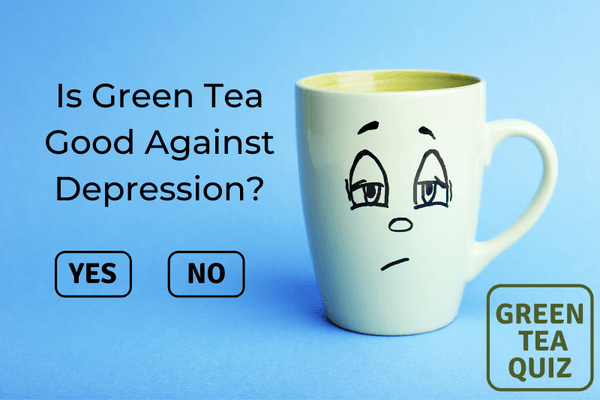
Is Green Tea Good Against Depression?

What is the best way to store your matcha & Japanese green tea?
5 Essential Storage Rules for Matcha and Japanese Green Tea
Read on to learn how to store matcha the proper way to ensure that you get the most out of this ancient elixir.



